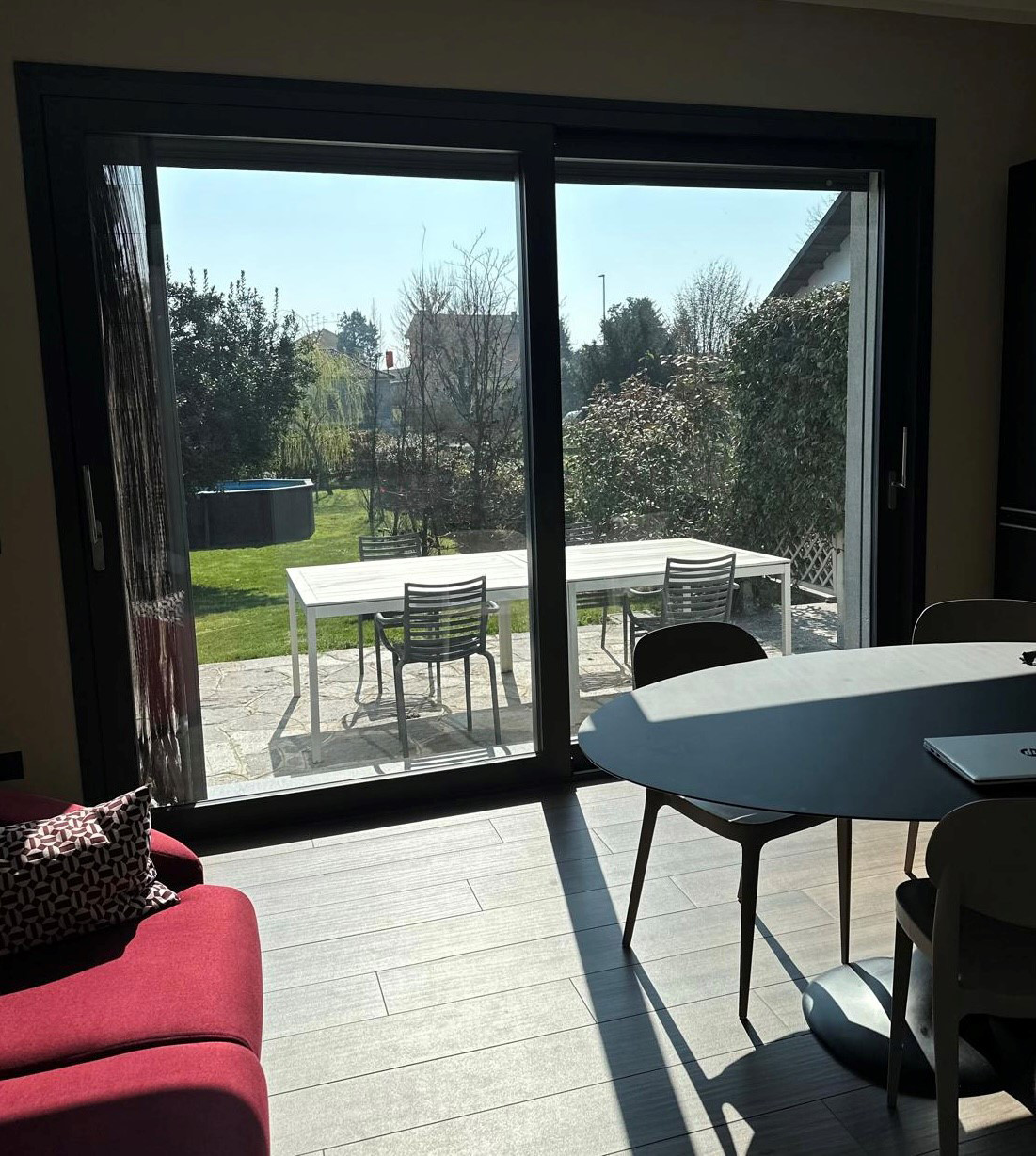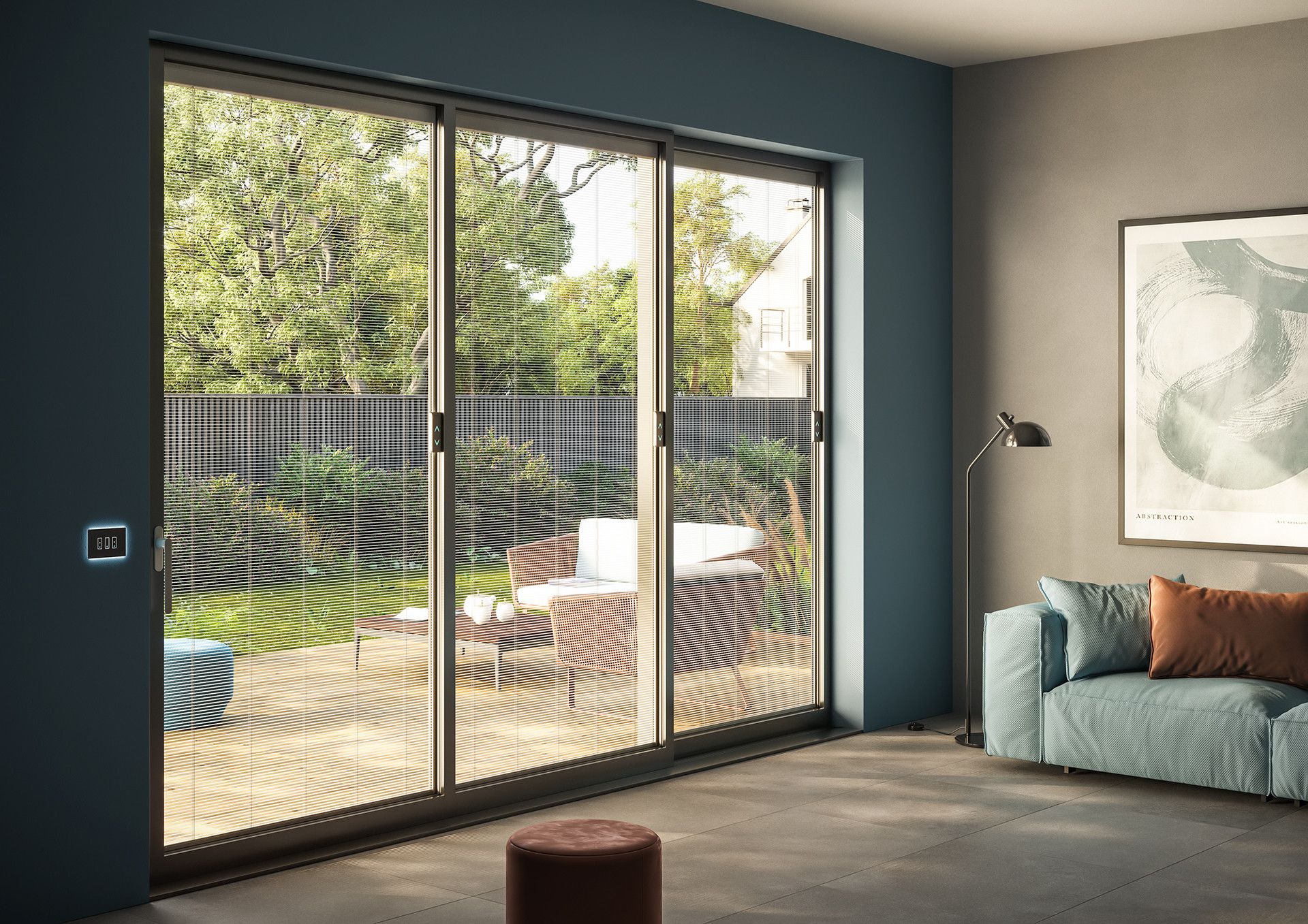Beating the heat at home: prevention is better (and more efficient) than cooling

With the arrival of summer, even the most welcoming home can become an uncomfortable space. The main culprit? Overheating caused by sunlight streaming unchecked through window glass, significantly raising indoor temperatures.
This phenomenon is even more pronounced in modern homes, which increasingly feature large glass surfaces.
Turning on the air conditioner may seem like the solution, but cooling down spaces that have already overheated consumes a lot of energy, resulting in high costs and a negative impact on comfort. To achieve quick results, people often set very low temperatures and maximum power — a combination that leads to drafts and unhealthy temperature swings.
The most effective approach is to prevent the problem by limiting the amount of heat that enters the home. How? With solar shading systems.
ENERGY-EFFICIENT WINDOWS ALL YEAR ROUND
When choosing new windows, it's important to consider not only their ability to retain heat in winter (measured by thermal transmittance, or U-value), but also their capacity to manage light and solar heat during summer.
Only then can you ensure real efficiency throughout the year and equip your home with truly high-performance windows.
Overlooking this aspect means simply shifting energy and comfort issues from winter to summer. A well-insulated home retains heat — an advantage in the colder months, but a potential problem when temperatures rise.
Today, glass makes up about 80% of a window’s surface — and that percentage is set to grow, as window design trends move toward slimmer frames. That’s why it’s essential to pay attention to what happens on the glazed surface.
When sunlight hits a window, both light and heat pass through the glass. Without any barrier, they enter the room, causing glare, annoying reflections, and an increase in temperature.

Solar shading, on the other hand, intercepts the sun’s rays and reduces the amount of energy entering the building. This effect is expressed by the solar factor (also known as the g-value), which indicates how much solar energy passes through a window.
The g-value ranges from 0 to 1 (or can be expressed as a percentage): the closer it is to 1, the more heat enters the building. Solar shading systems lower the g-value by blocking part of the sun’s radiation.
For example, ScreenLine integral blinds can reduce the solar factor by up to 90% (depending on the configuration of the blind and glass). In this case, only 10% of solar energy penetrates indoors — significantly improving indoor comfort and overall energy efficiency.

SCREENLINE: EFFICIENCY WITHIN THE GLASS
With ScreenLine, the blinds is integrated between two panes of glass. This means it can block heat before it enters the room — unlike interior blinds, which act only after the heat has already gotten in.
In addition, being housed inside the insulating glass unit offers several benefits: no dust or dirt accumulation (and therefore no cleaning), no maintenance, protection from damage, full integration with the window system, and a minimalist design that aligns perfectly with the clean, modern look of today’s window frames.








